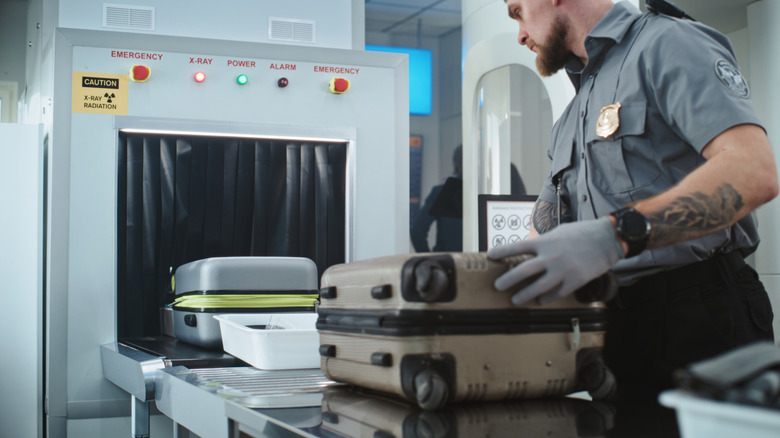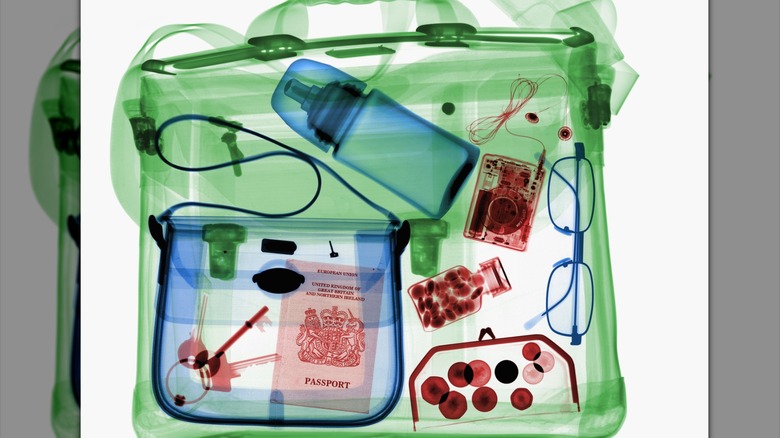What TSA's Bag Scanners Actually See When They Scan Your Luggage
Bags onto the conveyor belt, electronics in a bin, and off you go through the TSA scanning process. Everyone knows their carry-on bags are screened at the airport through an X-ray device or 3-D modeler, but what are TSA agents actually seeing when your bags pass through the machine? More importantly, what are they looking for and how do they identify it? If you've ever seen an X-ray of objects or a cross-cut visualization of the inside of a bag, things can get confusing really fast if you don't know what you're looking for.
The simple answer is that they're looking for items on the prohibited list — ammunition, rocket launchers, ninja throwing stars, bowling pins, brass knuckles, butane, and a host of other items that aren't allowed inside the plane. As for how they locate it, the technology that's used is called a computed tomography (CT) X-ray, similar to what's used in the medical field. It delivers bursts of X-rays to bags in low doses, and those beams move through materials at different speeds. This allows the machine to detect what the items inside actually are, such as metals, liquids, or organics, and provide a visual representation. Although the scanners create a 2-D image, algorithms help produce a 3-D model that can be viewed and rotated for a more thorough analysis to detect hazards like explosives, weapons, and other threats.
Over the years, the technology has improved, which is why at some airports you can leave electronics and liquids in your bag. The bag scanner's system is different from what TSA's airport security body scanners see when they scan you.
Why some scanned items have to be taken out of bags
Knowing that agents get a full view of everything inside your carry-on luggage, it does introduce questions about removing things. Why do you have to take certain items out of your bags, like liquids and electronics? It's because electronics' circuit boards and general bits and pieces can obscure items underneath or tucked inside. As for that ziplock bag of liquids? The TSA's scanner can generally determine what they are based on their density. It's not as much about what these items actually are, but about what they could contain or conceal.
In addition, tampered electronics are often a sign of potential danger, like a phone or tablet turned into an improvised explosive device (IED), and may need to be reviewed close-up. IEDs can also be concealed in shoes, liquids, and other apparel. Suddenly, it makes a lot of sense why you must remove certain items from your bag for separate checks and why you have to remove certain apparel, or at least why you used to. The TSA recently changed the shoes-off rule, so you can leave those on now. This is also a good example of how scanning technologies are being improved and getting better at finding potential dangers.
TSA agents and bag scanner algorithms can detect prohibited items by essentially "seeing" them through scanners. According to the TSA website, the organization continuously "adjusts processes and procedures" to deal with evolving threats over time. That also means you should read up on the TSA electronics rules that change year to year.

